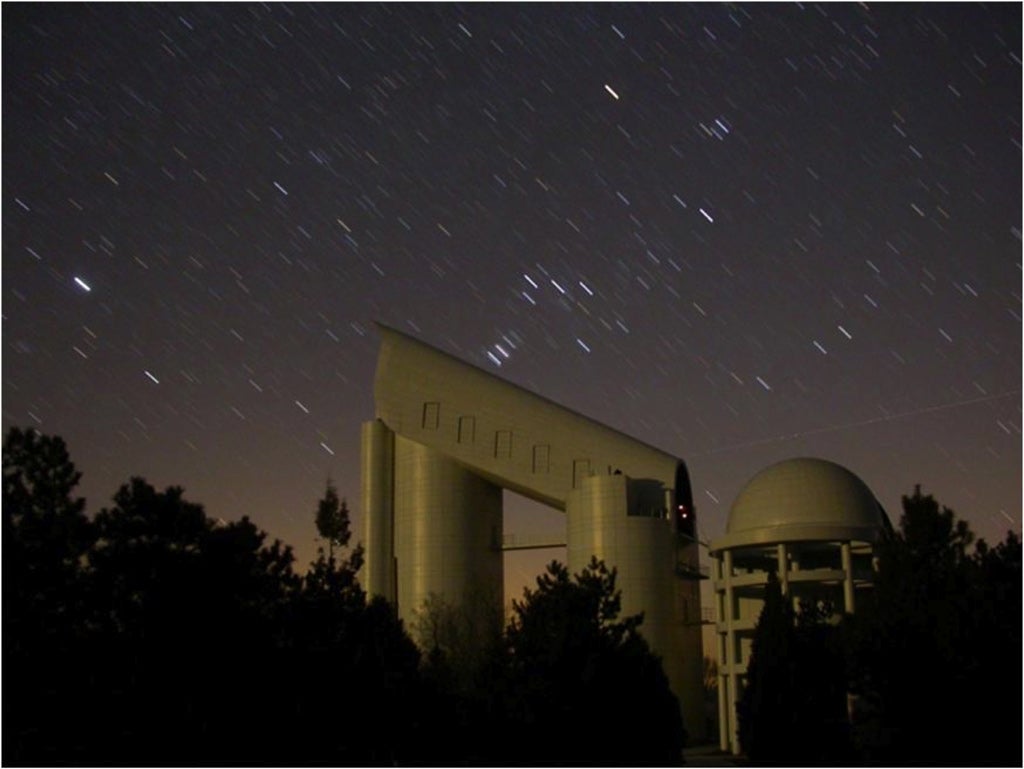On the website for LAMOST, you can read about the telescope’s specifications and how its instruments help scientists answer the not insignificant question, “How has the universe been formed and evolved?” As a bonus, anyone can download data!
Read this paper about FAST to learn more about the facility’s progress and the science that astronomers intend to do when the project is completed in 2016. The National Optical Observatories of the Chinese Academy of Sciences also has a page describing the project and its implications.
21CMA’s website requires a translation unless you can read Chinese, so the linked version is Google’s version of the English, which is not always perfect. However, a visit to the site reveals the project’s history and purpose, its staff, and images showing the staff’s relationships with the herders who live near the telescope site.
The SONG page gives play-by-play updates about the progress at all of its locations and some early science data.
On the TMT site, you can get as in-depth a look as you want at the international telescope. From a broad overview of the astronomical targets to the test procedure for the surface actuators, all the information is here.
PLATO’s page has continuously updating plots that show the current temperatures, levels, pressures, currents, and usages (among other things) of its instruments and engines. You also can see some stunning Antarctic images and browse the many publications that use PLATO data.










